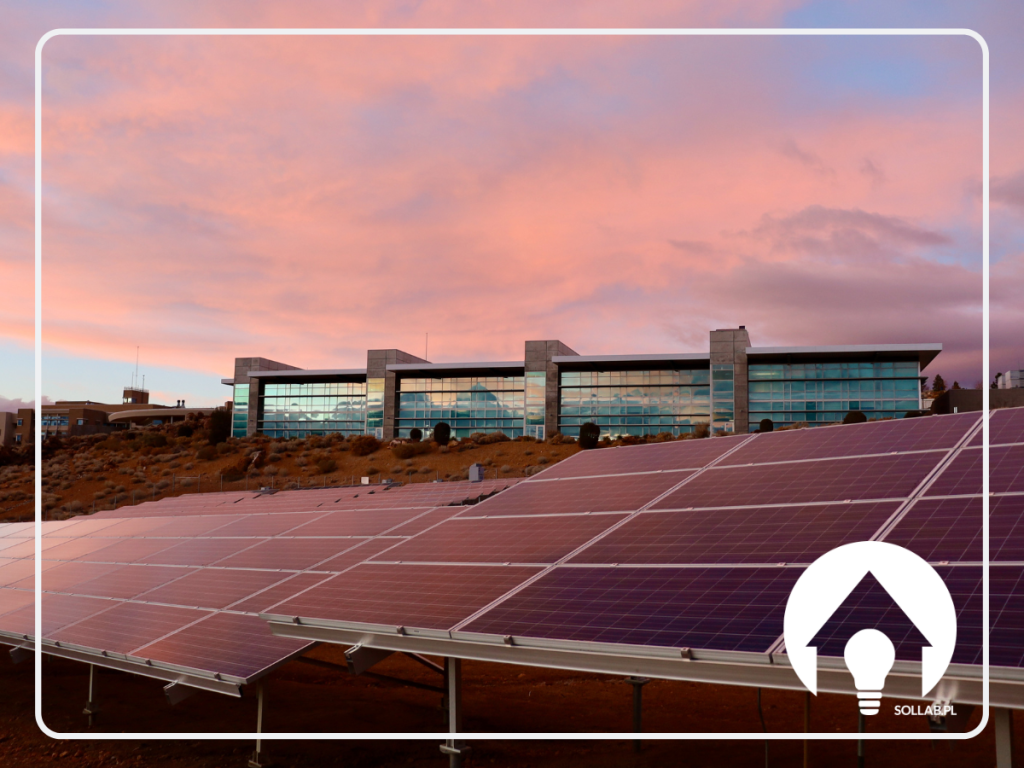Perovskite cells and their revolutionary impact on photovoltaics
Perovskite cells represent a breakthrough in renewable energy technology and have the potential to revolutionise the solar panel market. They are characterised by low production costs and high efficiency in converting solar energy into electricity. In this article you will learn about all aspects of perovskite cells, their applications, advantages and potential limitations.
What are perovskites?
Perovskite cells are a type of solar cell that use materials from the perovskite group, special minerals with a characteristic crystal structure. The discovery of their unique photovoltaic properties has opened up new possibilities in the field of extracting energy from the sun.
Perovskites are a class of materials with a distinctive crystalline structure, known for a wide range of applications, particularly in the field of electronics and photovoltaics. It is named after the mineral perovskite, whose chemical formula is CaTiO3 (calcium titanate), and was named after the Russian mineralogist Lev Perovsky.
The structure of perovskites is usually described as ABX3, where:
- "A" and "B" are cations of different sizes,
- "X" is an anion, usually an oxygen or a halogen.
This unique structure gives perovskites a number of interesting properties, such as high electrical conductivity, interesting optical properties and the ability to conduct ions. In recent years, they have gained particular importance in the field of photovoltaics, where perovskite materials are used to create high-performance solar cells. These perovskite cells are distinguished by their low production cost and high efficiency, making them an attractive alternative to traditional silicon-based solar cells.
How do perovskite cells work?
The operation of perovskite cells is based on converting sunlight energy into electricity, similar to traditional photovoltaic cells. The key difference is the material from which they are made. Perovskite cells use special materials from the perovskite family, which have unique light-sensitive properties.
When sunlight falls on a perovskite cell, the material absorbs photons. This process causes the electrons in the perovskite material to be excited to a higher energy state. The excited electrons form electron-hole pairs. The electron is in a higher energy state, while the hole, or absence of an electron, is in a lower energy state. Electrons and holes are separated and directed to different layers of the cell. This separation is crucial because it prevents electrons from recombining with holes (which would mean a loss of energy). The separated electrons travel through an external electrical circuit to the electrode, creating an electric current. After transferring their energy, the electrons return to the perovskite cell and recombine with the holes, which closes the circuit. After recombination, the system returns to its initial state, ready to reabsorb sunlight and produce an electric current.
The hallmarks of perovskite cells are their high efficiency at converting sunlight into electricity and their ability to be manufactured at a lower cost than traditional silicon cells. In addition, they can be flexible and lightweight, which opens up new possibilities for applications such as integration with different surfaces and materials.
Where are perovskite cells used?
As a relatively new and still developing technology, perovskite cells are currently not yet widely used in commercial products. However, prototypes of devices using these cells are being actively tested.
With the ability to apply perovskite layers to flexible films, it expects these cells to be used in lightweight, flexible solar panels. Such panels will be ideal for use in construction, clothing, gadgets and other mobile applications.
Research is also underway to integrate perovskite cells into the architecture of buildings. This will enable wall and roof surfaces to be used to generate clean electricity from solar radiation.
Advantages and disadvantages of perovskite cells
While perovskite cells have considerable potential and several strengths, they also face some challenges.
Advantages
- Low production cost - production technology is relatively simple and based on low-cost materials
- High efficiency - these cells achieve efficiencies in excess of 25%
- Flexibility - perovskite cells can be manufactured on a flexible substrate
- Highly functional - they can be adapted to different weather conditions, making them more effective than classic photovoltaic panels.
Disadvantages
- Relatively short shelf life
- Sensitivity to moisture
- Less stable than silicon
- Presence of toxic lead in perovskites
Summary
Perovskite cells are seen as one of the most promising technologies in the field of photovoltaics, with the potential to dominate the market in the coming years, mainly due to their potentially very low production costs. These cells are based on the perovskite semiconductor, which is cheap to synthesise and can be deposited as thin films on various types of substrates.
One of the key advantages of perovskite cells is their relatively high efficiency, exceeding 20% and, in the latest prototypes, even 32%! In addition, this technology enables the creation of flexible solar panels, which is beneficial for both mobile and building applications.
Still, perovskite cells do not match the durability of silicon cells, which have been proven for years. Intensive research is underway to improve their stability and eliminate harmful substances such as lead. Once these challenges are overcome, perovskites have the potential to radically change the photovoltaic market.
It is expected that the market share of perovskite panels could grow to more than 10% by 2027-2030. If these predictions come true, this innovative and cost-effective technology could revolutionise global access to renewable energy sources. This is a harbinger of positive change for us all!
















